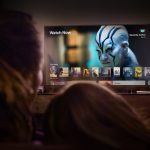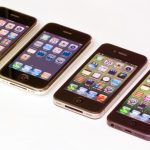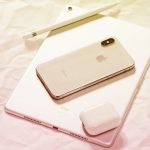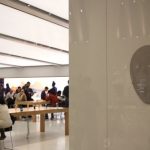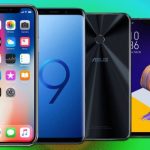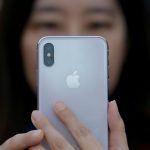How Apple Became A Car Company
From its luxury car analogies to its executive “car guys,” Cupertino’s recent interest isn’t just a passing fancy.
As if a record-breaking financial quarter and the upcoming watch weren’t enough to excite the Apple faithful, recently the tech world has distracted itself with reports that the behemoth is interested in building a car. There were rumors when Apple-owned minivans were spotted in Brooklyn, San Francisco and Hawaii, boasting sensor-heavy rigs reminiscent of those used by Google in its testing of autonomous driving technology. It’s also been reported that Apple has lured away auto talent from companies like Mercedes and BMW, and that Tim Cook approved a secret project with hundreds of engineers more than a year ago.
The idea that Apple could be looking to take on Google or Tesla has been met with incredulity in some quarters. But the better question may be: why wouldn’t Apple do this?

It sounds like a cliché to say that Apple has long been a car company without a car, but it’s not without a grain of truth. Apple has always had more in common with luxury car manufacturers than it has with the majority of its fellow tech companies. Cars are the ultimate consumer product: bringing together high-quality engineering, and an assurance that you can be transported safely wherever you need to go. Much the same claim can be made for Apple products.
In the company’s early days, this meant the System or Mac OS, which made it easy to carry out the kind of tasks for which you would want a computer. Later on, it meant easily surfing the Internet with the first-generation iMac; downloading digital music with iTunes; using smartphones with the iPhone; tablets with the iPad; and wearables with Apple Watch.
There are, as Bloomberg‘s Tim Higgins points out, plenty of arguments for an Apple automotive play: Cupertino has the cash, the momentum, the expertise, the retail network, and the global experience to position itself as a car company. Gene Munster, an analyst with Piper Jaffray, told him, “It makes a ton of sense. If you would’ve said 10 years ago, ‘Apple is going to be in the car business,’ I think people would’ve said you’re crazy—because it would’ve been crazy—and today it’s a much different company that’s able to tackle these massive addressable markets.”
But there are broader and more historical reasons why Apple would be interested in getting into the car business. It’s a company that realized, early in its lifespan, the importance of attaching emotion to the act of buying a computer. “Automobiles were bought for emotional reasons as much as any practical reason,” former Apple CEO John Sculley told me in a conversation for my book, The Apple Revolution. Sculley was one of the first people at Apple to verbalize the importance of selling computers like they were cars.
But Apple’s not just philosophically well-matched with the car business. It also has a strong automotive pedigree. Steve Jobs—the adopted son of a machinist with a passion for restoring old cars—often likened computers to automobiles. In Walter Isaacson’s 2011 biography, a conversation is recalled in which the late Apple CEO and a member of Apple’s creative service argued over a Mac design element. “It should be more like a Porsche,” Jobs said. During a meeting late in his life, Jobs told the New York Times’ John Markoff that he would have liked to build an Apple Car; an observation backed up by outgoing Apple board member Mickey Drexler in a conversation with Fast Company in 2012.
From Mac Guys To Car Guys
Other senior Apple execs are “car guys,” too. Eddy Cue, the company’s head of Internet software and services, is on the board of Ferrari. Phil Schiller, Apple’s head of marketing, is a huge car fan. His Twitter profile reads “Apple, Sports, Cars, Science, Scuba, Drums, Photography.” Luca Maestri, Apple’s chief financial officer, is a 20-year veteran of General Motors. And then there’s Jony Ive.

As this week’s acclaimed New Yorker profile of Apple’s design guru makes clear, Ive is the single most important person at Apple today. Having begun his ascent through the ranks during Steve Jobs’s reign, Ive has spent the past few years establishing himself—both creatively and politically—as untouchable. The Apple Watch may be Ive’s fullest, most unfiltered expression yet, but there’s no doubting an Apple Car would also be right up his alley.
Before Ive became interested in high tech, he wanted to be a car designer, applying to university to study automotive design, but was put off by the other students. “They were making vroom, vroom noises as they did their drawings,” he recalled years later. Today, Ive is a petrolhead, with a fleet of British cars to his name—at one time including a $250,000 Aston Martin DB9 which he totaled in an almost deadly car crash just one month after buying it. He is most often seen in his high-performance limousine, the Bentley Mulsanne. As the New Yorker profile pointed out, Ive is a car snob of the highest order, applying the same kind of withering put-downs it’s easy to imagine his former boss would toss out. “There are some shocking cars on the road,” he says about the Toyota Echo, adding that, “One person’s car is another person’s scenery.” He refers to the same car as “nothing … just insipid.” Later he expresses his disgust at the fact that another senior Apple executive drives a Toyota Camry.
Ive’s secretive design studio at Apple is similarly filled with car lovers. There is Ive’s BFF Marc Newson, who worked with Ive on the Apple Watch, and previously created the Ford O21C concept car for the 1999 Tokyo Motor Show. Resembling one of the bulbous, multicolored first-gen iMacs, the car included a line of push-button controls with Apple-style icons. There’s also former Lamborghini and Audi car designer Julian Hönig, ex BMW-employee Aaron Von Minden, former Mercedes whiz Johann Jungwirth, and more—many of whom have innovative concept car designs on their resumes.

Driving The Idea Forward
Apple has long since been in communication with car companies—and not just for recruiting purposes. By 2004, the company was reaching out to carmakers to come to an agreement that would allow the iPod to be played within vehicles. In 2014, Apple debuted CarPlay: its in-car infotainment systems for third-party manufacturers; allowing drivers to use Apple’s Music, Maps, Messages, and Mail apps with a familiar iOS interface. Apple has stated that it hopes 24 million cars will be sporting its dashboard system by 2019.
The company has also filed multiple patents for car-related technology—from simple technologies for guiding you back to your vehicle with your iPhone, to services that would conceivably allow you to turn on the engine, and raise and lower your windows, using your iOS device.
Where Apple goes from here isn’t yet clear. Theories range from the possibility that Apple could take on Google with a self-driving car, to the idea that it could acquire Tesla somewhere down the line. Others, like former Apple VP-turned-tech-pundit Jean-Louis Gassée, think there’s no evidence for an Apple car at all—and this is a case of hype-driven smoke without fire. Perhaps he is right, and this will turn out to be on par with the mythical Apple television set rather than the happening-this-year Apple Watch. As can be seen from the plethora of unfulfilled Apple patents published each week, plenty of ideas are mooted in Cupertino, which never become actual products that ship.
Whatever the case, however, if there’s one thing we can be sure Apple won’t be do, it is to jump too quickly, too publicly. With the Apple Watch taking off some of the pressure to move into new post-Steve Jobs product categories, the company can take its sweet time on the next innovation. “Apple has shown time and again that it will only enter a new business when it’s convinced it can make a unique contribution that no other company can,” says veteran Apple analyst Horace Dediu of Asymco. “Historically, that’s how Apple has created product categories for itself. I suspect that this is what Apple is trying to ascertain right now. But in terms of [whether a car is a business Apple be interested in from a design perspective]? This is absolutely what they do.”
There will be those who will bring up the challenges Apple faces on its new journey, such as the daunting numbers of the car industry. If Apple wanted to build a world-beating car that would grow its profits by 20%, one analyst says it would need to build a car brand with the size and cachet of BMW. And then there’s Apple’s geographic strengths. Apple Maps technology may have come a long way, but it fared so badly upon its debut that CEO Tim Cook had to apologize, before booting then-iOS boss Scott Forstall out of the company. Certainly, if Apple were to explore autonomous cars, then the idea of being automatically driven the wrong way up an airport runway is cause for alarm.
But don’t rule Apple out, or act like it’s not got the credentials to take on the automotive industry. After all, the last time people accused Apple of arrogantly swaggering into a business it didn’t understand was 2007, when Steve Jobs unveiled an Apple smartphone. Six hundred and fifty million iPhones later, and no-one is laughing any more, apart from Apple’s shareholders. By 2025—and perhaps much sooner—who’s to say we won’t be saying the same thing about an iCar?
[Car Photo: Elegeyda via Shutterstock]
(211)





